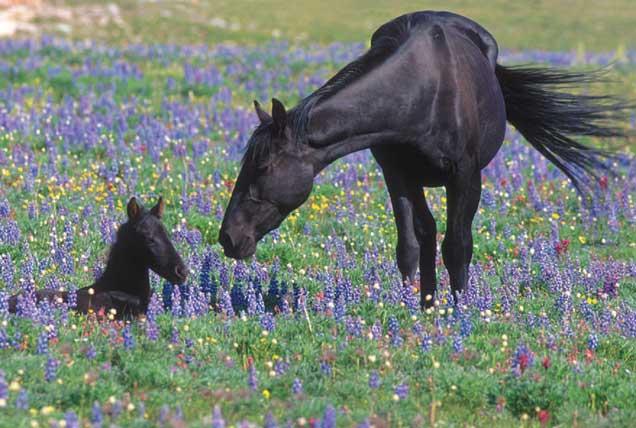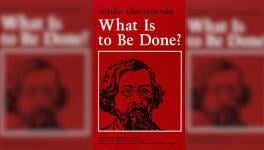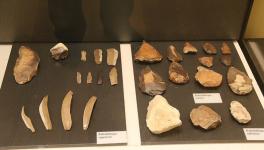Where did Domesticated Horses Come From? Where did the Wild Ones Go?

Image Courtesy: US DOI
After an exciting new study was published in Science last week, researchers are again haunted by the question of the origins of domesticated horses. Studies until now had suggested that modern day horses have descended from their ancestors domesticated by members of the Botai culture — a group of hunters and herders based in ancient Kazakhstan. This has now been proven wrong by the DNA analysis done by paleogeneticist Ludovic Orlando and Botai zooarchaeologist Alan Outram. Their study also found that Przewalski’s horses, until now considered to be the only remaining population of wild horses, are not that wild.
The DNA analysis showed that none of the domesticated horses in the last 4,000 years had descended from the Botai ones. The researchers have pointed to two likely explanations for this result. One possibility is that the Botai horses spread so far and wide and bred with so many wild species that the original Botai DNA vanished. The second, and more likely one, is that a different ancient population other than the Botai culture managed to domesticate horses independently.
Emmeline Hill, an equine scientist at University College Dublin, said, “We are now back to the intriguing question—who were the ancestors of our modern horses, and who were the peoples that were responsible for their early husbandry?”
If it was not the Botai horses, then the other horse population which spread may have also contributed to the emergence of the Indo-European languages.
The study points to horses part of the Kurgan culture as a likely candidate. This culture was based in the Pontic-Caspian steppe, a vast land spread parts of Europe and Asia. Horses were integral to the expansion of the Kurgan culture. This expansion is considered to be the source of the spread of the Indo-European languages.
A 2015 study led by Wolfgang Haak from the University of Adelaide, Australia, showed that a massive migration took place about 4,500 years ago of the Yamnaya people from the eastern periphery of Europe to the centre. Yamnaya people, part of the Kurgan culture, are recognised as “vectors for the spread of Indo-European languages into Europe.”
Authors of the Botai horse study have written that this expansion of the Yamnaya people may have contributed to the genetic signature of modern day horses. Botai horses may have only been suitable for localised pastoral activity, rather than long distance travel and warfare. As the Yamnaya people expanded, the horses would have significantly contributed to their military prowess, and made it possible for them to exert dominance that led to spread of their language.
The other finding of the analysis showed that Przewalski’s horses, seen until now as the only wild horses, actually emerged from the domesticated Botai horse population. That makes them not wild, but feral. The results of the study completely alter the structure of the horse family tree as known till now.
Get the latest reports & analysis with people's perspective on Protests, movements & deep analytical videos, discussions of the current affairs in your Telegram app. Subscribe to NewsClick's Telegram channel & get Real-Time updates on stories, as they get published on our website.
























